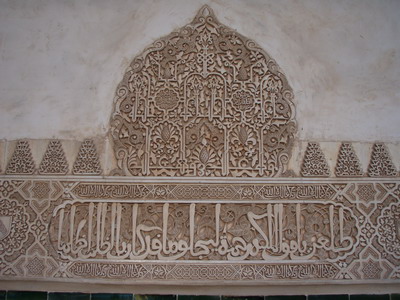
October
2007
Part One
| |
| HOME |
| About Tenaya |
| About Us |
| Latest Update |
| Logs from Current Year |
| Logs from Previous Years |
| Katie's View |
| Route Map |
| Links |
| Contact Us |
![]()
Almerimar Marina
Our home for the winter
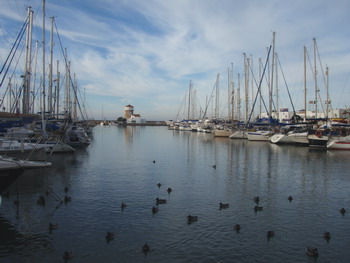
The marina has room for about 600 boats and has a fairly large live-aboard community. They have organized a radio net each morning and several social events including a Friday evening happy hour for cruisers. This is one of the least expensive marinas on the Costa del Sol but is quite nice. There are good showers, a well stocked supermarket, a laundry mat and fluff-n-fold, car rental agencies and other shops. It's really an "urbanization", an isolated holiday resort. So although we are not in a bustling Spanish city we do have all the necessary conveniences. We began Spanish language classes on October 16.
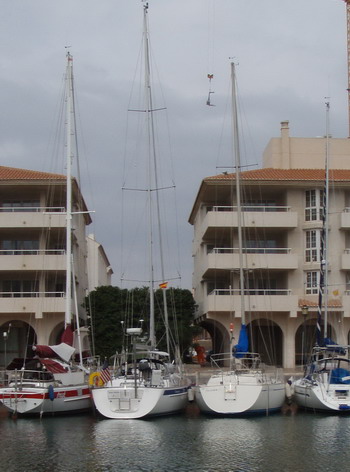
Tenaya is moored bow-to the quay. We have a bow ladder to make it easy to get on and off. All boats are moored Mediterranean style, with nothing between the boats except their fenders. This allows the maximum number of boats to be in the marina. Some boats choose to back in but we like having the privacy of having our cockpit and outside eating area away from the walking area.
The Alhambra
Granada, Spain
One of our goals this winter is to explore as much of Spain as we can. We rented a car for a week and began our travels. Our first trip was to Granada where no visit is complete without a trip to the Alhambra, the giant walled fortress and palace on the hill. We each bought a Bono Turistico, a card that allowed us entry to the Alhambra, guaranteed a time to visit the palace Nazaries (which has limited entry), 9 rides on the city busses, 48 hours on the tourist sight-seeing bus and free entry to many sites. It was a great deal for 26 euros each, both for the savings and convenience.
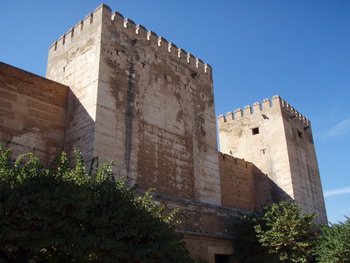
The oldest part of the Alhambra is the Alcazaba or fortress built in the eleventh century when the Moors still controlled much of Spain.
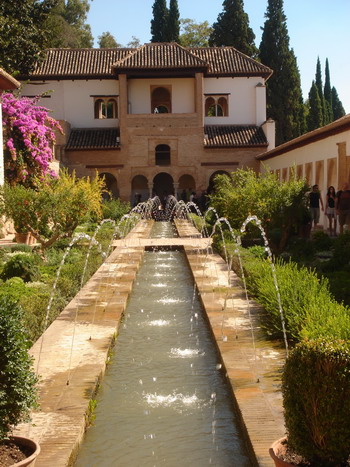
The Palacios Nazaries is a simple but very beautiful place. The Rough Guide quoted the book by Titus Burckhardt, Moorish Culture in Spain: "With its rhythmic repetition, it does not seek to capture the eye to lead it into an imagined world, but, on the contrary, liberates it from all preoccupations of the mind. It does not transmit any specific ideas, but a state of being, which is at once repose and inner rhythm."

Burckhardt continues, "The way patterns are woven from a single band, or radiate from many identical centers, served as a pure simile for Islamic belief in the oneness of God, manifested at the center of every form and being."
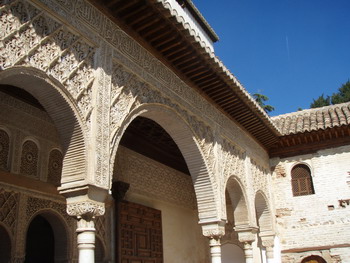
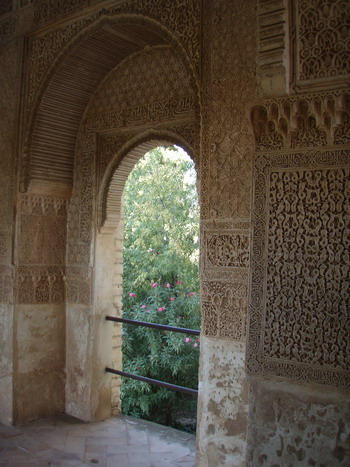
Most of the Arabic inscriptions are taken from the Koran including Wa-la ghaliba illa-Llah (There is no conqueror but God) which was the family motto of the Nasrids who built and lived in the Alhambra for hundreds of years.
The Cartuja
Granada
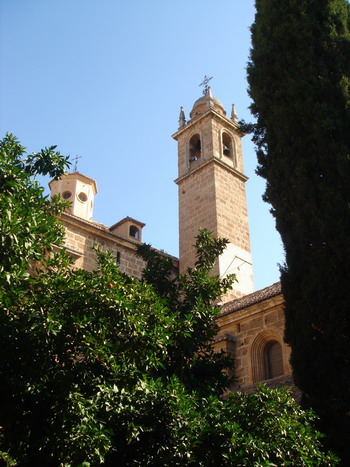
The cloister of La Cartuja monastery as seen from the courtyard.
Construction of La Cartuja monastery began in 1545 creating a home for the Carthusian monks who inhabited it until 1836. The interior had several rooms the monks used, all interesting. My favorite had huge paintings of monks, some suffering with knives through their bodies and hatches in their heads. I guess I (Katie) like those gory, religious XVI century paintings! The church (completed 1662) is absolutely beautiful with an incredibly ornate private room behind the altar. We would have loved to have taken pictures but it was forbidden. This monastery was actually the highlight of my visit to Granada.
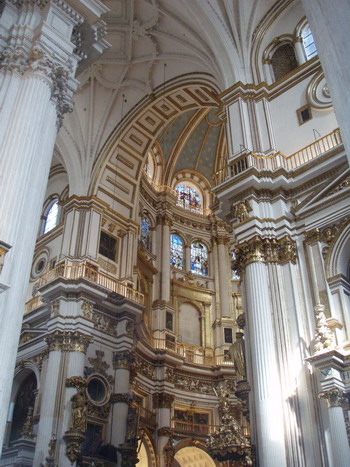
Granada's Cathedral was begun in 1521 but not completed until the eighteenth century.

A large cathedral, it seemed to lack soul. I prefer real candles to electric ones.
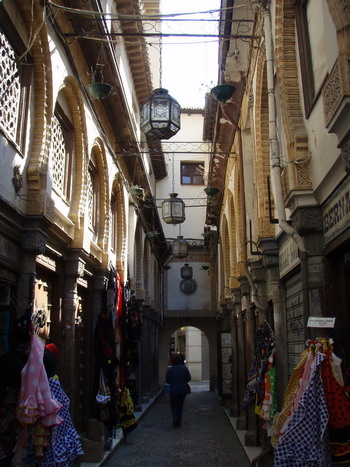
Granada is a great city for walking around with many small street filled with shops. In the evenings the streets are crowded with people out for nightly walks. As is the case for any place in Spain.
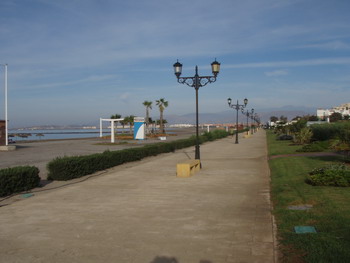
There is a boardwalk a few kilometers long along the beach to the west and a nature preserve with miles of beaches to the east. Although the water and air temperatures are still warm there are very few people on the beach this time of year.
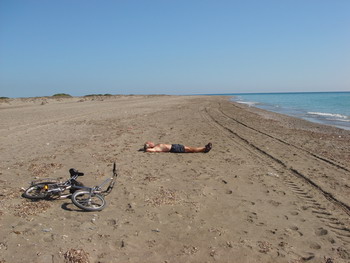
Jim taking a break from cycling in the nature preserve. Our foldable bikes are not great in sand or washboards.
The Palacios Nazaries
The Alhambra, Granada
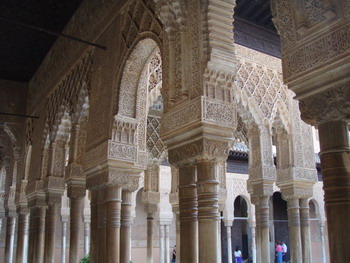
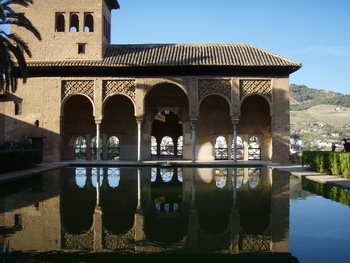
The Alhambra was occupied by the Moor leaders for hundreds of years and was the last city in Spain to be conquered by the Christians. King Fernando and Queen Isabel, the leaders of Christian Spain, finally took control of Granada in 1492 and lived in the Alhambra for awhile.
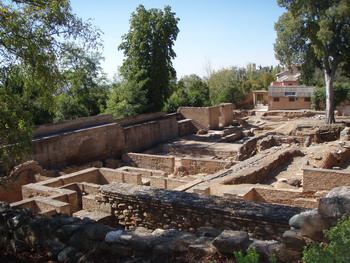
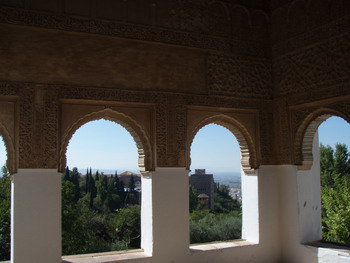
In 1812 the Alhambra was taken and occupied by Napoleon's forces. They destroyed and looted much of the building and even tried, unsuccessfully, to blow it up completely.
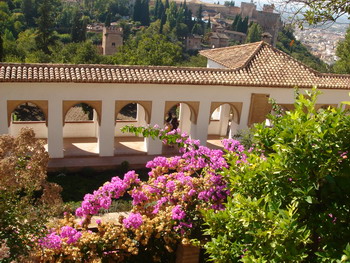
I am enjoying reading Washington Irving's book, Tales of the Alhambra, which he wrote while living in the Alhambra in 1832.

Generalife is next to the palace and contains the beautiful gardens enjoyed by the sultans.
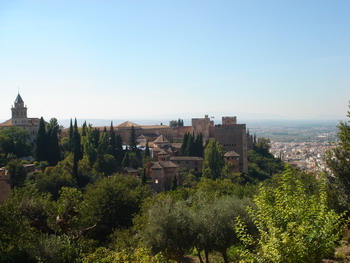
The view of the Palace and Alcazaba from the gardens of Generalife
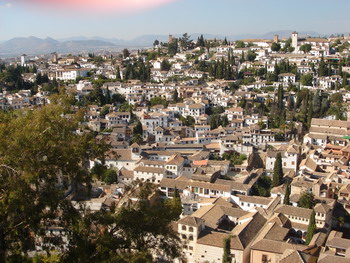
The view from the Alhambra of the old Arab quarter of Albaicin, Spain's largest surviving Moorish barrio
 .
.
The ground of a plaza near the cathedral.
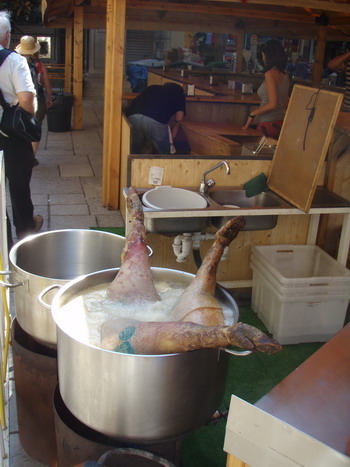
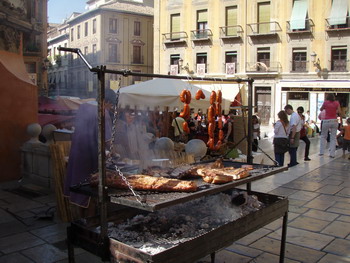
We had a delicious chorizo sandwich at this street stand in downtown Granada.
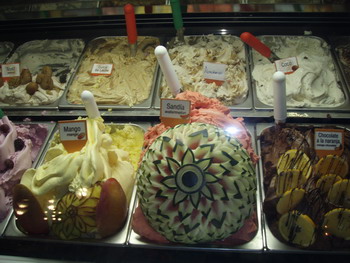
And for desert.........ice cream!